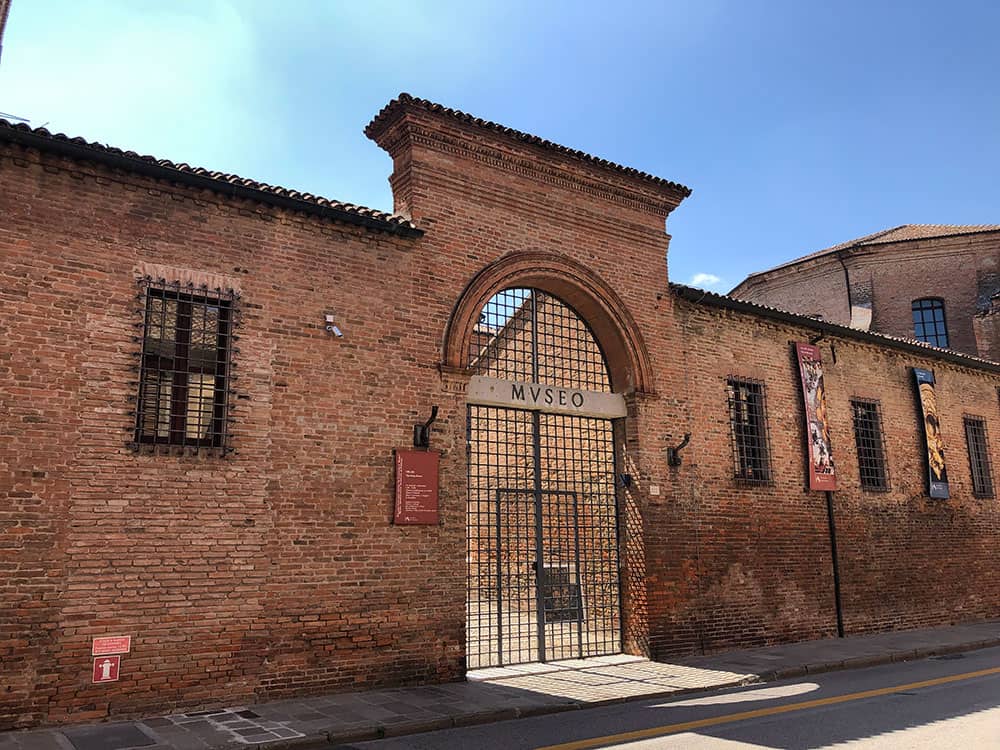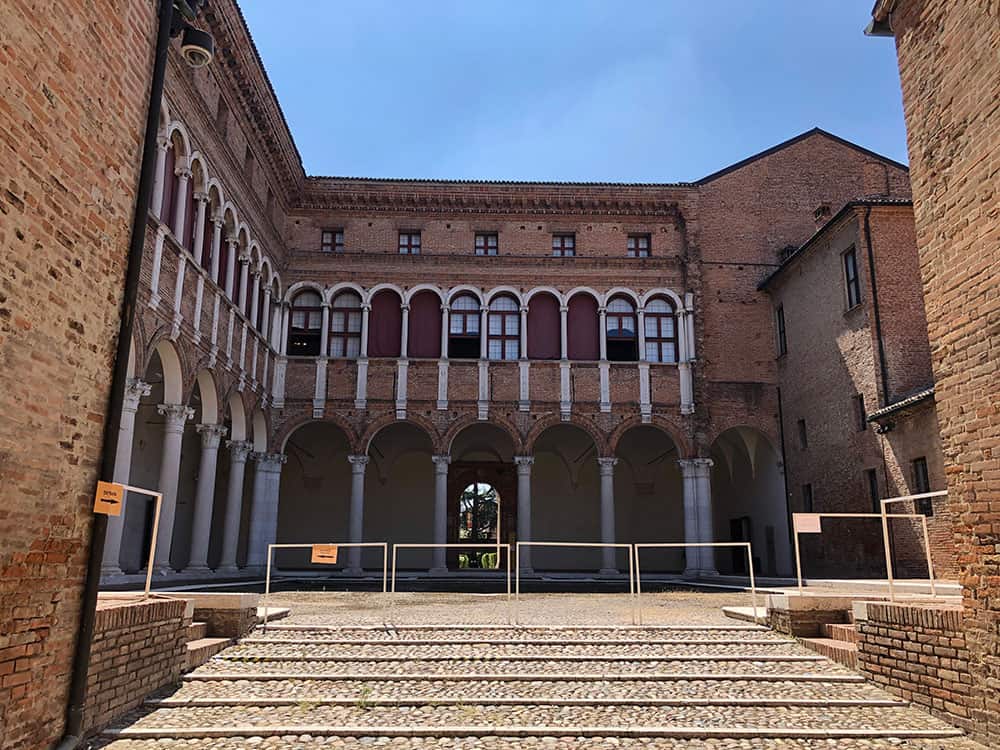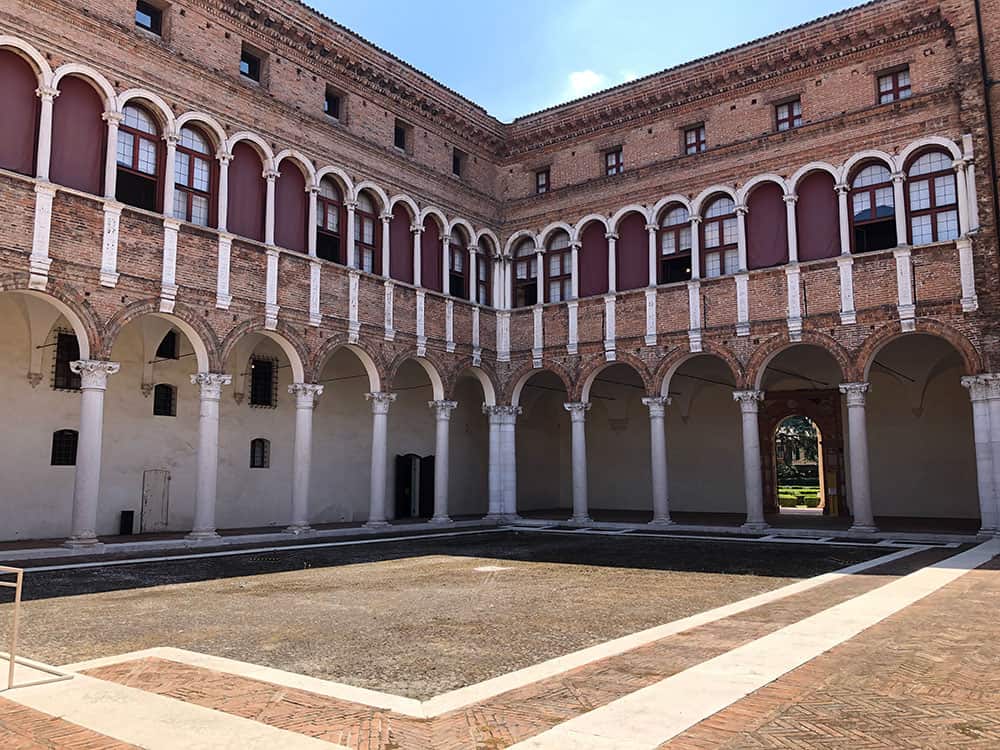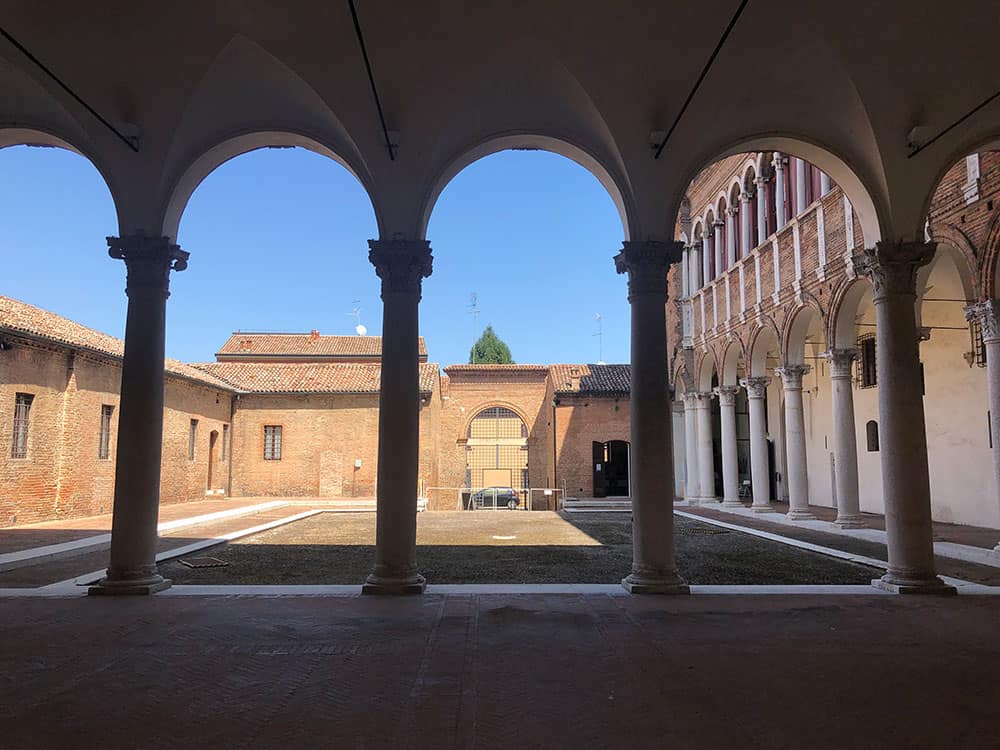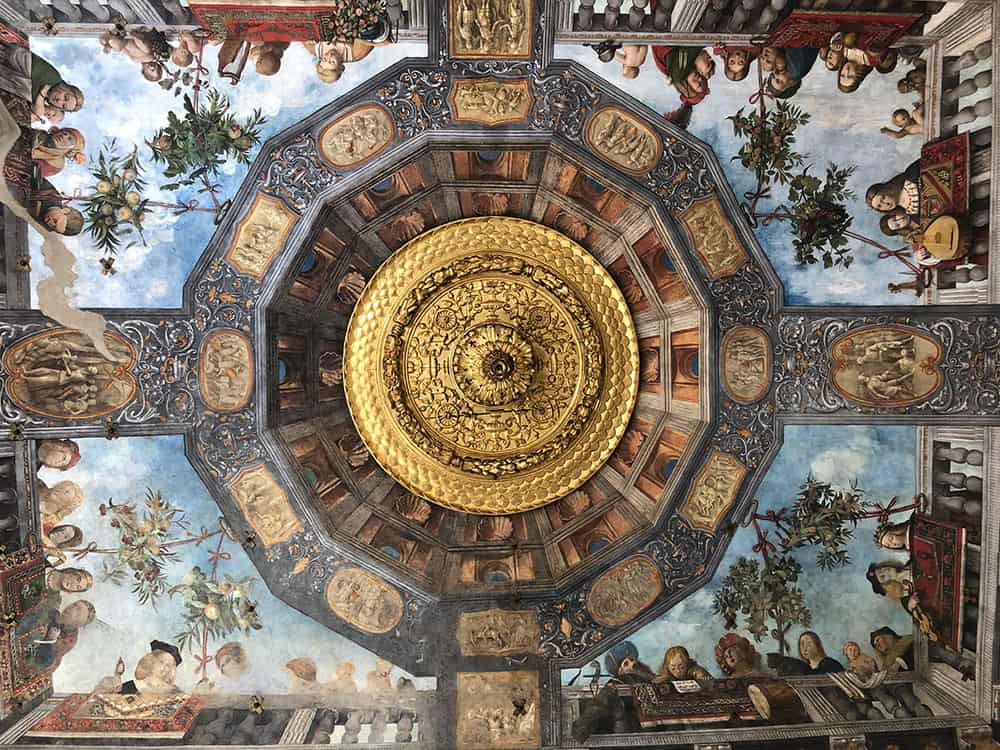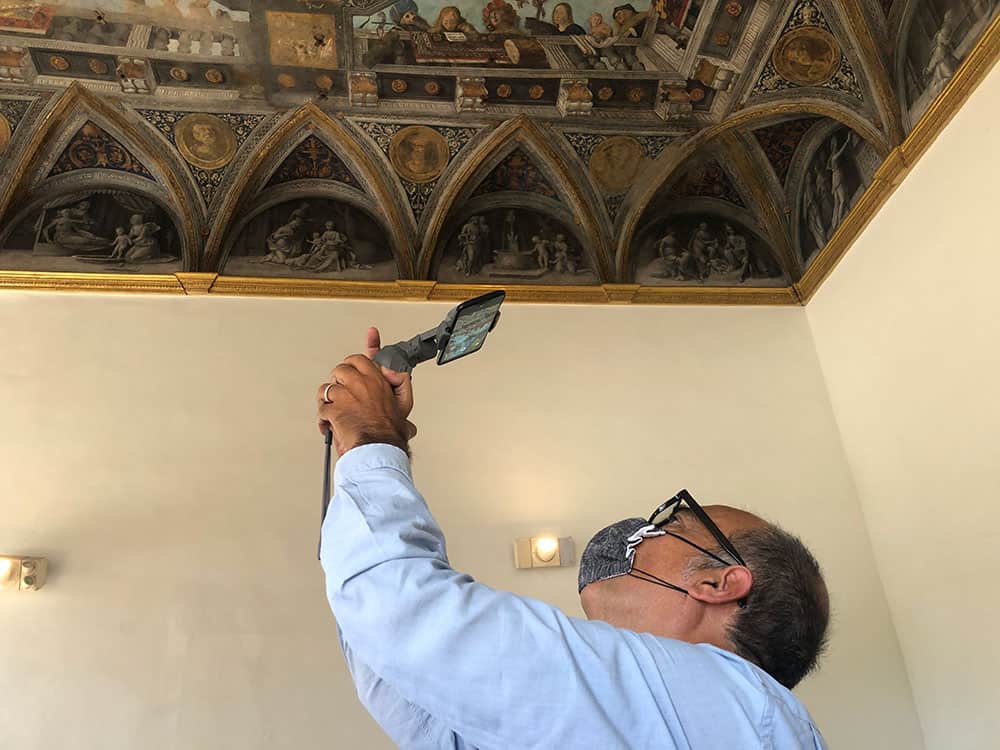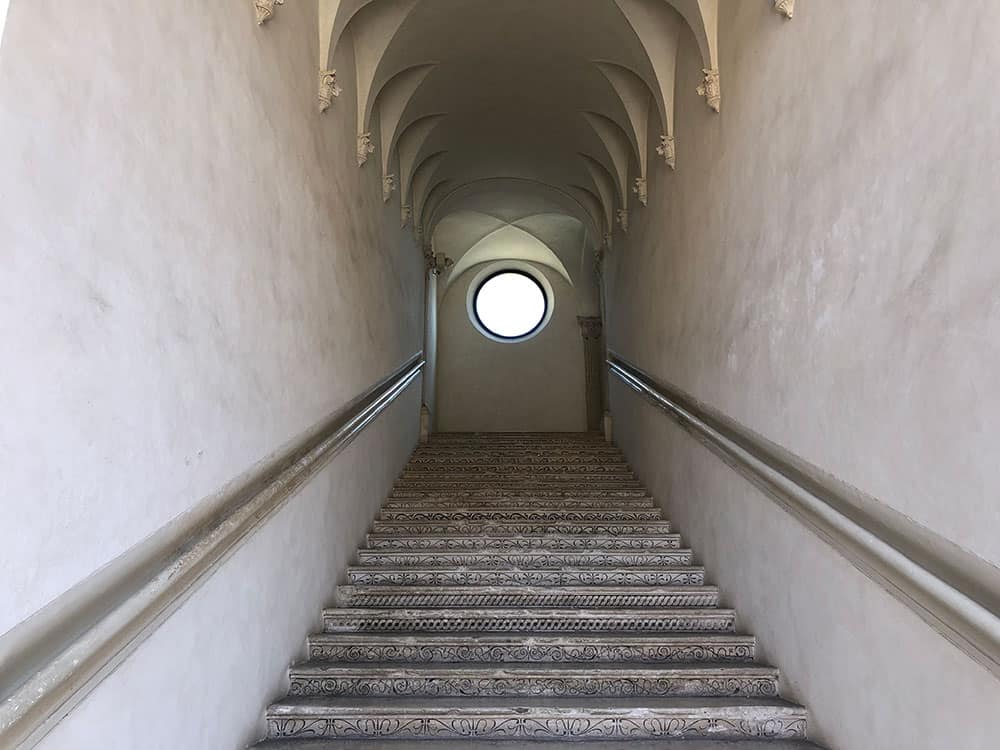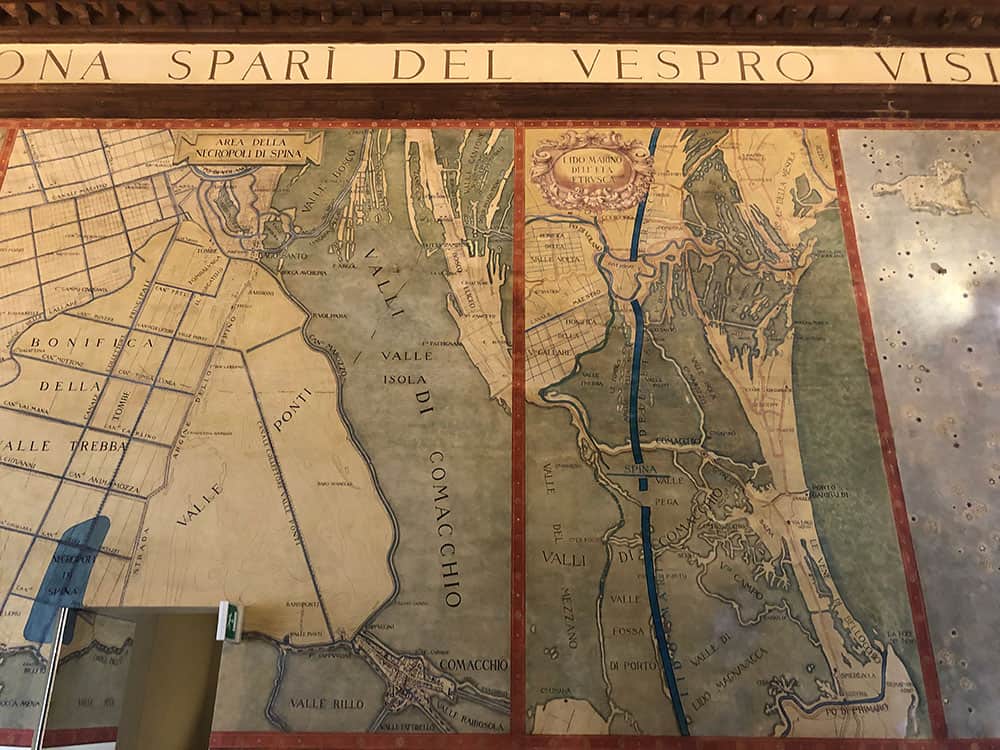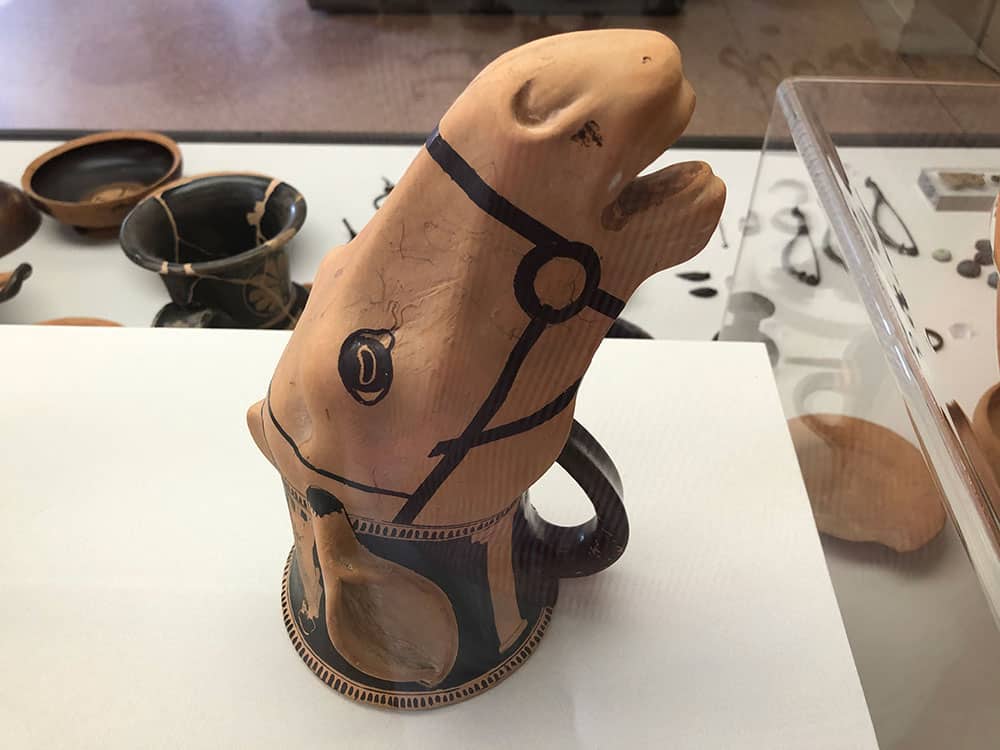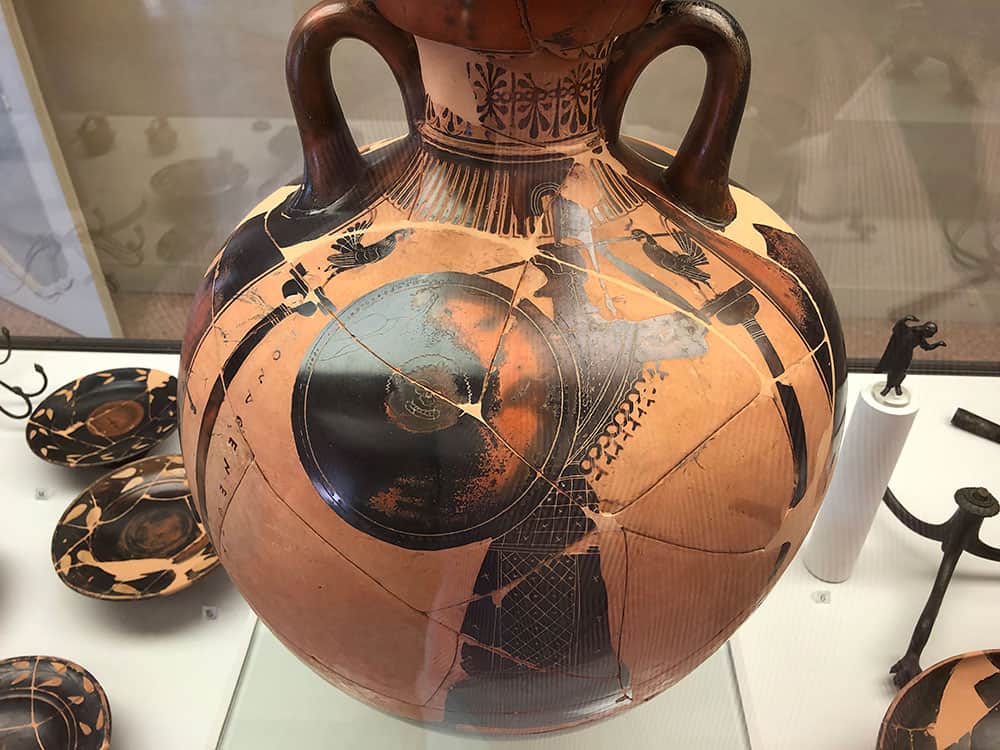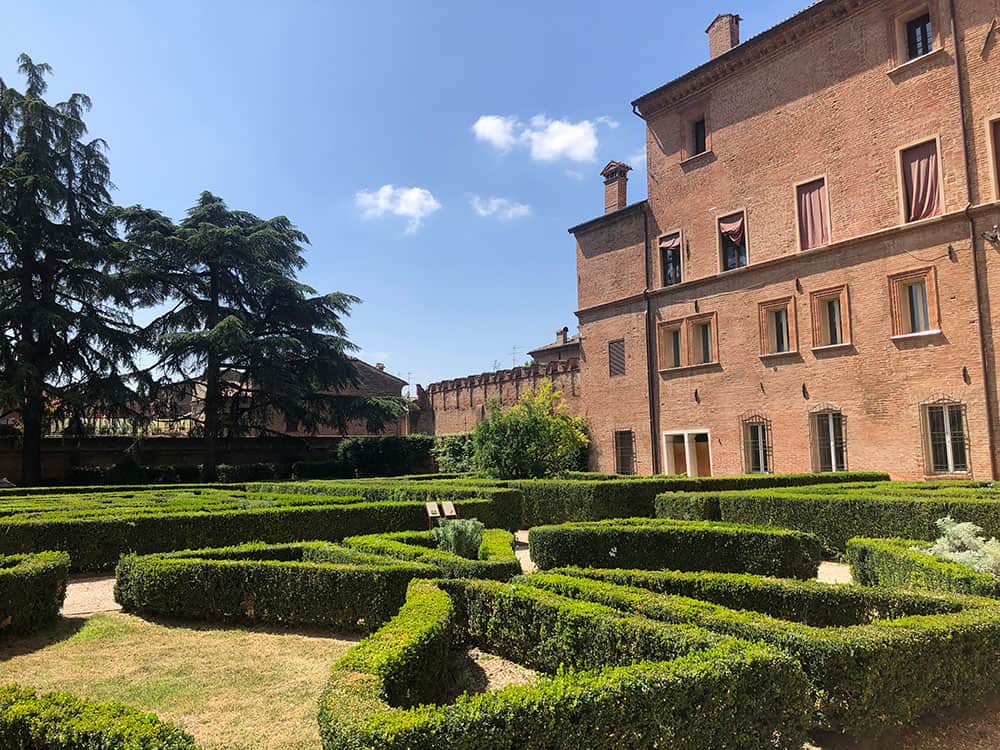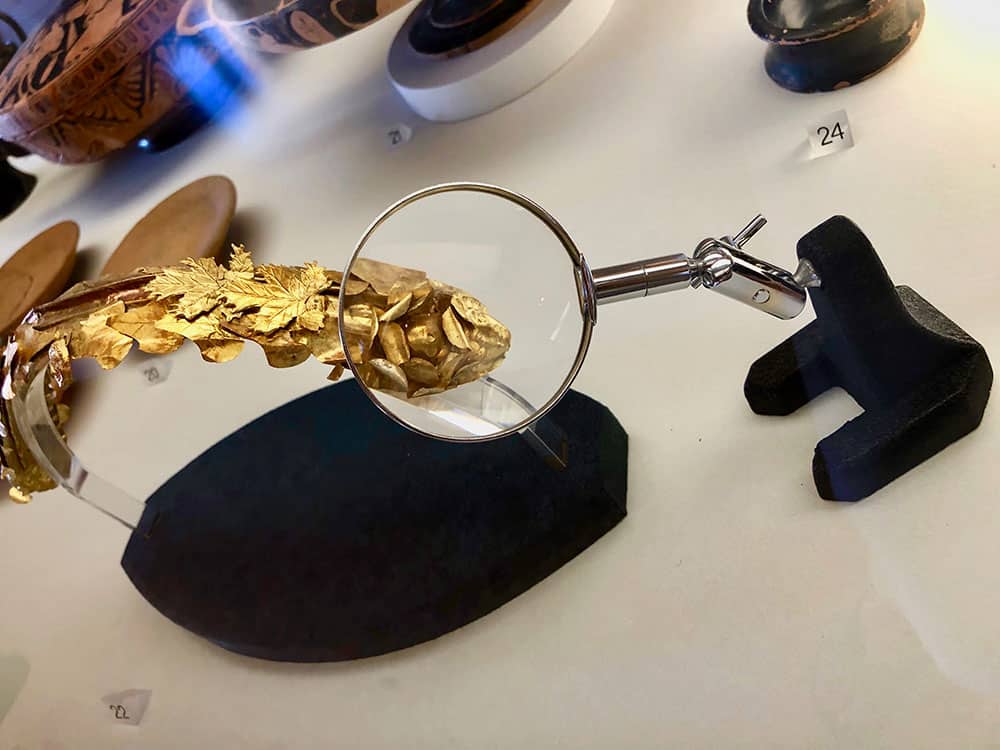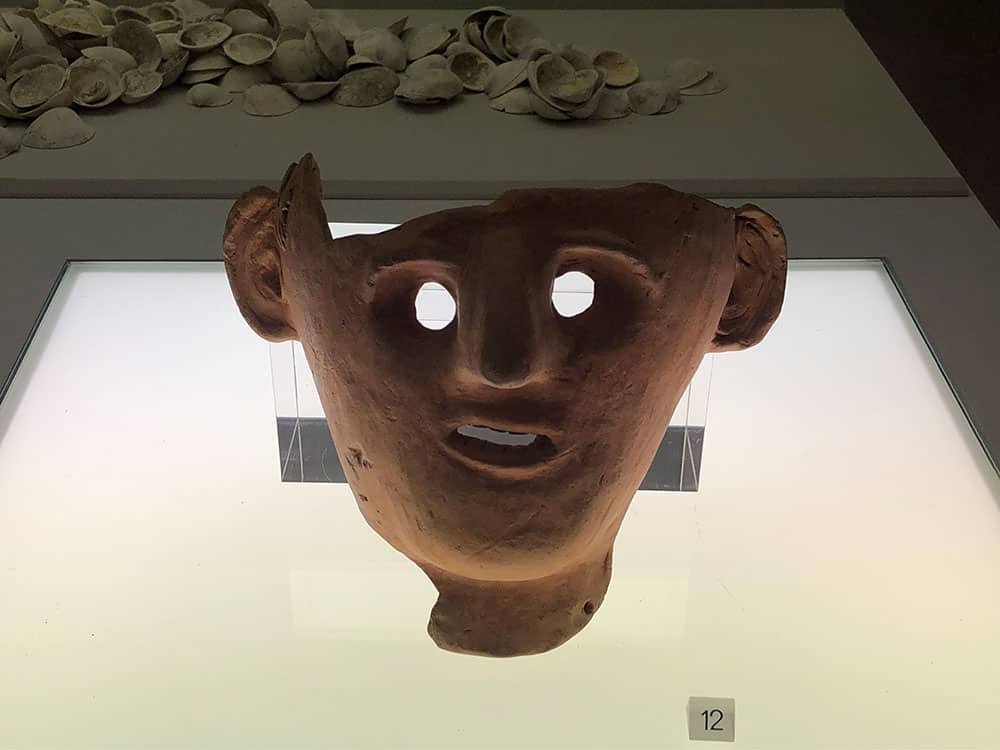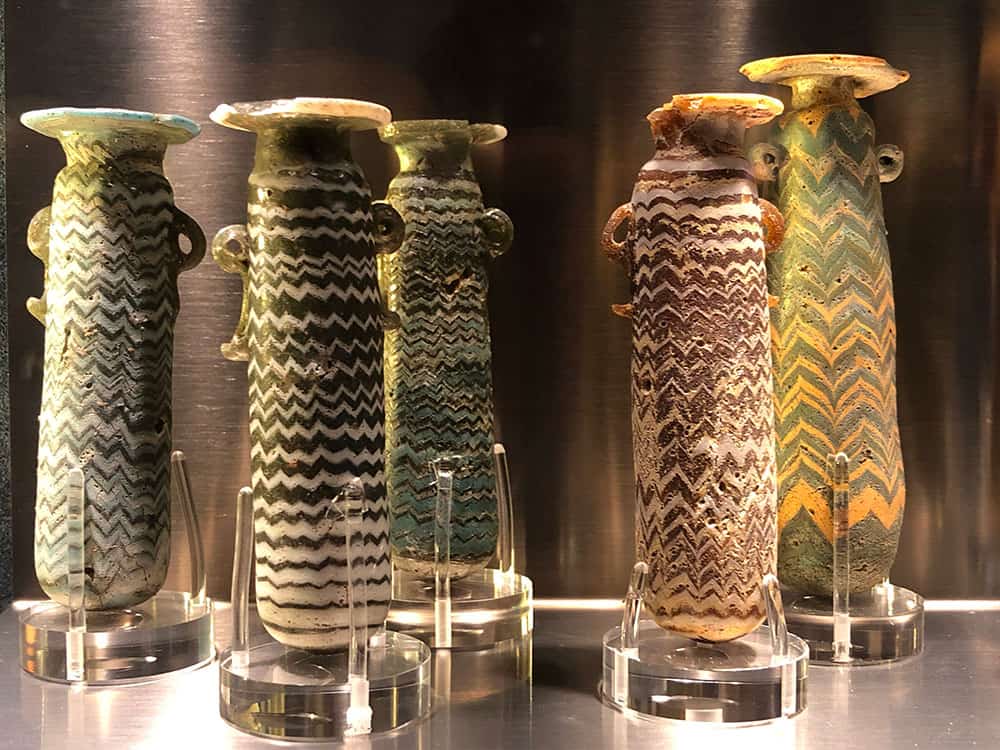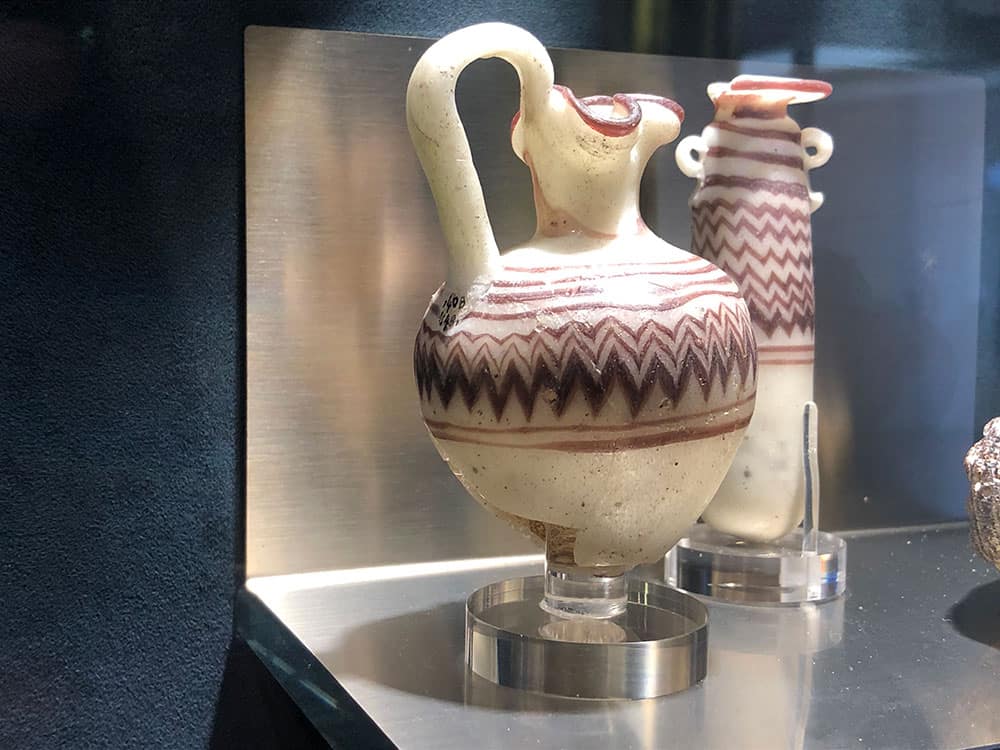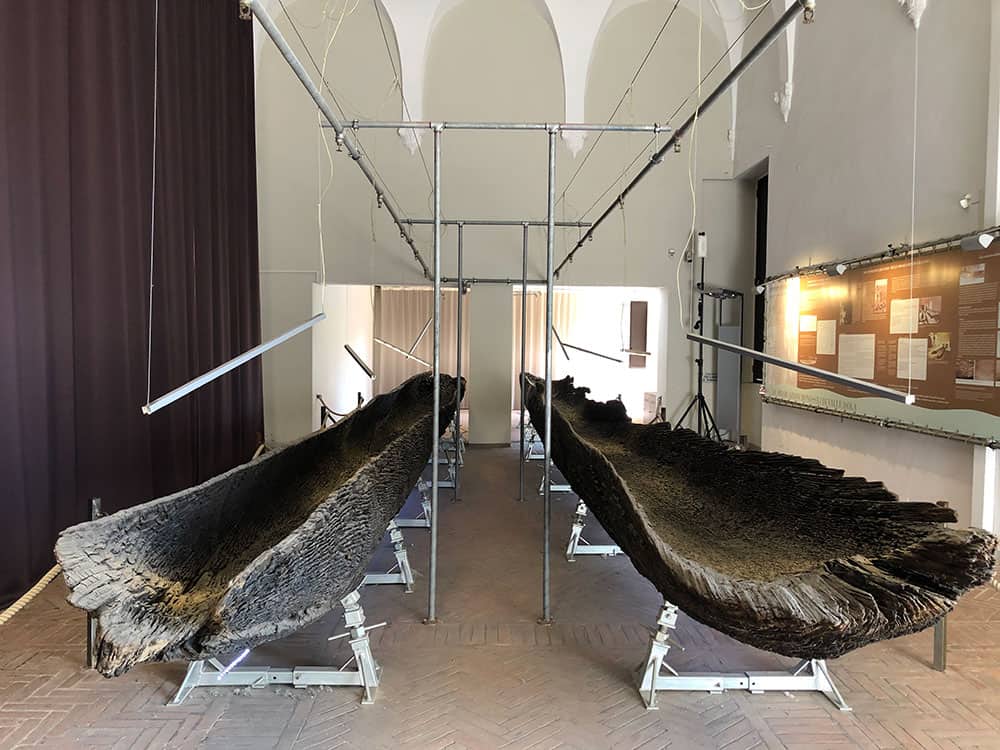The reason why Casachiesi wanders around Italy in search of well-known but often not too popular beauties is to show our followers how much splendor, how much history, and how many curiosities can be found in this country just moving a few kilometers away from the most popular cities such as Rome, Florence, and Venice.
As soon as the government, after the severe lockdown, in spring gave us the possibility, Nazim and I were catapulted to visit an area not too far from Milan full of attractions: the lower part of Lombardy and Emilia Romagna.
One of the cities picked for our summer tour was Ferrara and we already made a video (link here) which illustrates the most notable sites of the city but we have decided to dedicate a separate article to the Archaeological Museum because it contains two particularly interesting aspects: a unique collection set in a spectacular context.
The Archaeological Museum of Ferrara is located in a splendid Renaissance palace, Palazzo Constabili, also known as Palazzo di Ludovico il Moro, designed by Biagio Rossetti, the court architect to whom Duke Ercole d’Este entrusted the urban reorganization of the whole city, the so-called “Addizione Erculea“.
After complex restoration work in 2010, the Palace is once again usable in its sixteenth-century splendor. In fact, the “Palazzone” (according to the most popular denomination) had fallen into a condition of great squalor until, in 1929, the Ministry of National Education set out to use it as a museum for the archaeological materials found in the Etruscan necropolis of Spina. of which we’ll discuss shortly.
At the beginning of our tour, a very phlegmatic and kind employee made us understand that time and attention had to be dedicated to the palace and its collection because we were approaching something unique of its kind.
Honestly, accustomed as we are, to visiting beautiful places, it seemed a little exaggerated but then, room after room, we had to change our mind, thanking the heavens for not having omitted the visit to one of the most important sites in the city for which we mistakenly budgeted for one day only.
One of the most exciting rooms in Palazzo Constabili is undoubtedly La Sala del Tesoro decorated between 1503 and 1506 by Benvenuto Tisi known as Garofalo, one of the most important representatives of the Renaissance Ferrara school. Looking up, you are faced with an exceptional decorative show: a bold bottom-up perspective inspired by the famous Camera degli Sposi painted by Andrea Mantegna at Palazzo Ducale in nearby Mantua.
Along the sides of the ceiling a large balcony from which oriental carpets hang: a gallery of characters, many of them with musical instruments, looking out casually to testify with grace and measure their love for art, music, and poetry, almost a showcase of the aristocracy of the time.
Also on the ground floor, the interior of the building opens onto a vast Renaissance garden, an extraordinary example of a historical formal garden. It is not the original, but a 1930s style creation and smaller than the originals.
Upstairs a large hall that was painted in 1935 where ancient geographical maps have been reproduced that affect the reclamation area that in the twenties gave way to the discovery of the great Etruscan necropolis of Spina.
The grandiose decorative apparatus of the hall must be seen in the spirit of the time in which it was created, in the middle of the Fascist era when the revival of the myth of ancient imperial Rome helped to legitimize the politics of the State. Ferrara at that time claimed its Etruscan descent, underlining its link with the Etruscan people from which the Tarquini dynasty, king of Rome, originated.
It is interesting to observe how the profile of the Adriatic coast has changed over the centuries due to the accumulation of debris in the Po river delta to the point of submerging and making Spina disappear, one of the most important trading ports in the Mediterranean in pre-Roman times.
The search for the ancient Spina among the marshes in the Po delta was a true archaeological thriller. It has fascinated scholars and illustrious scholars since the Middle Ages, but all traces of the famous and flourishing maritime emporium described by Greek and Roman authors seemed to have lost all traces.
Only in 1922, in a completely random and unexpected way during the public reclamation works of the Comacchio valleys, terracotta and bronzes of magnificent Greek workmanship started to pop up from the drying soil.
Practically the city of Spina had been buried in the mud for centuries.
The first who hypothesized the site of Spina in Valle Trebba, a valley near Comacchio, was the Bolognese doctor Gian Francesco Bonaveri at the end of the 17th century; an intuition that did not follow then between 19229 and 1935 the excavation campaigns conducted by the superintendent Salvatore Aurigemma in the Valle Trebba area brought to light the northern area of the Spina necropolis more than 1200 burials.
In the 1950s, subsequent reclamation led to the discovery of another 3000 tombs, enormously expanding the area involved in the excavations under the supervision of the Superintendency for Archaeological Heritage of Emilia Romagna and with the direction of the National Archaeological Museum of Ferrara.
The research made us discover a part of the urban complex, built on stilts, distributed within the lagoon of the river Po, connected to the Adriatic Sea by a network of navigable canals.
The structure of the city, safe and well organized, created the multiethnic environment described in the ancient sources and testified by the variety of the materials found, a very flourishing commercial center from its foundation in 540 BC. until the first half of the third century BC.
The Spineti, in short, were cosmopolitan and wealthy Etruscans, capable, for a couple of centuries at least, of guaranteeing a high standard of living and of sublimating it, at the moment of death, in tombs equipped with very rich funeral equipment.
In addition to all the beautifully crafted pottery, particular attention must be paid to the “Sala degli Ori“, an extraordinary collection of gold, silver, amber, and glass paste jewelry of Greek and Etruscan manufacture found in the tombs of Spina. Earrings, rings, diadems, necklaces, pendants, and jewels, set up in a particularly suggestive way by a jewelry maison that knows: Bulgari !!! A feast for the eyes.
One last suggestion: do not miss the room with access adjacent to the garden which contains two enormous monoxyl pirogues boats (obtained from a single trunk) used for trade on the Po river and its tributaries. Gigantic black and disciple sculptures silently testify to the greatness of a civilization that has disappeared into the womb of the earth.
So follow our suggestion and take the time to immerse yourself in a miraculous find enclosed in an enchanted place.
Betti
[socialWarfare]

